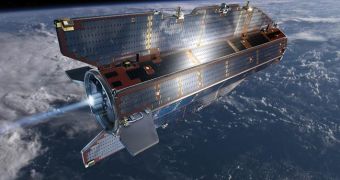Originally scheduled to be launched on March 16th, the European Space Agency (ESA)'s Gravity Field and Steady-State Ocean Circulation Explorer (GOCE) satellite was, instead, boosted to orbit on Tuesday, in a launch sequence that culminated in a successful lift-off at 10:21 am EDT (1421 GMT). GOCE's purpose is to measure the minute variations that occur in the Earth's gravitational pull around its surface. The scientists behind it say that, while most people think that gravity is the same all around the planet, that's actually not true.
“If we go to the North Pole, we will weigh more than if we are at the equator,” Danilo Muzi, who is the GOCE program manager at ESA, shares. The $450-million craft is constructed in a very specific manner and is especially designed to pick up the tiny variations in pull over different areas. It will be unusually low for a satellite its size and purpose, as the ESA team behind the project hopes that that will allow it to become more sensible to the anomalies it could encounter in the upper atmosphere.
The new machine, dubbed “the most beautiful satellite in the world,” was launched from the Complex 133 at the Plesetsk Cosmodrome, in far Northern Russia, aboard a Rockot SS-19 missile, which was usually used to deliver nuclear warheads around the globe. Basically, the Rockot was not a specifically-designed carrier vehicle, such as the Ariane 5 or the Delta II delivery system, but it was, apparently, able to handle the task it was appointed easily.
“We have one comparison that we often make. Imagine a snowflake, which has a fraction of a gram, slowly falling down on to the deck of a supertanker. The acceleration that the supertanker experiences from that snowflake is comparable to the sensitivity of our instrument,” Goce Mission Manager Rune Floberghagen has recently told the BBC News.

 14 DAY TRIAL //
14 DAY TRIAL //